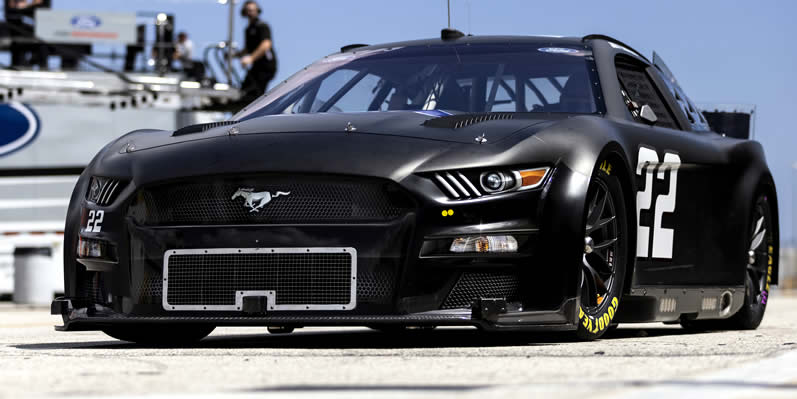
When the Daytona 500 started in 1959, qualifying Duels were a 100-mile race. It takes 200 laps for the race to be completed. A mile is a milestone in the world of motor racing. The ET will determine starting positions for 40 drivers for Sunday's Great American Race. Here are some details about the race. You can also learn about the number of stages and the starting time. Continue reading to learn more!
Duels determine starting positions for 40 drivers
The outcome of the qualifying rounds will determine the order the Daytona 500 500 will start. The first due will take place on Thursday afternoon. It features drivers from the first to fourth qualifying rounds. The fastest qualifier automatically advances into the second duel. However, the second-fastest will begin on the last row. The Daytona 500 will take place the Saturday before the final duel.

Race length
The Daytona 500 NASCAR Race is the most well-known. It is held each year on a 2.5 mile triangular track. Usually, there are 200 laps, or approximately 500 miles, of the race. Average speed is 200 mph during the race. The race is cut short by rain in 2003, which reduced it to 109 laps. Three years after his father's victory, Dale Earnhardt, Jr. won Daytona 500 in 2004.
Number of stages
If you love NASCAR you may be wondering how many laps are required. The race is the season-opening Super Bowl for NASCAR and has a length of 200 laps and 500 miles. There will be forty cars in this race, and four non-chartered car drivers will take the stage after duels and qualifying. These are the answers to your questions about how many laps you need to win Daytona 500.
Time of start
Daytona 500 is an annually held car race. The race is held in the afternoon but has been delayed by heavy rainfall in the past. Due to heavy rains, the race start time has been altered several times. In 2011, race start was at noon. 2012, however, it was at 1 p.m. It is important that viewers can watch the race up to dinnertime on the east coast by knowing the time it starts.

Trophy awarded to winner
The Daytona 500 race is one of NASCAR's most prestigious. A win can net the winning driver up to $2 million and a custom Daytona Rolex watch. While the name of this trophy has been changed many times over the years to reflect the changing times, it is still the same. A replica of the original trophy is included with the Daytona 500 Trophy. It also includes a story.
FAQ
Which country holds the most car races?
USA - Over 100 countries hold car racing. USA has more than 300 car races per year.
What is the difference between racing and road cars?
Road cars are intended to be driven on public roads. The racing cars were specifically made for competitions such as motorcar racing. They have special aerodynamic features that help them accelerate quickly and brake sharply.
What is a pitstop?
Pit stops allow you to stop driving and let someone else take over for a few minutes. It's also known as a pit stop.
Why does race car driver wear special clothing?
Many race car drivers don special clothing.
These clothes are great for keeping them cool during racing.
The fabric helps prevent sweat from dripping down their bodies.
It also protects them from the wind-blown damage to their skin.
Which car racing sport is the most successful?
Formula 1 Grand Prix, the world's most prestigious motorsport title, is held annually. It was first held in 1950 and is now part of the FIA World Championship for Drivers, Constructors, and Teams.
Statistics
- In 2009, the slick tires returned as a part of revisions to the rules for the 2009 season; slicks have no grooves and give up to 18% more contact with the track. (en.wikipedia.org)
- According to FormulaMoney, the design, development, and construction of chassis and engines can cost teams as much as $255 million annually. (businessinsider.com)
- Acceleration is a little gentler (relatively speaking) too, with 0-100km/h taking an estimated 3.1 seconds and 0-200km/h covered in 7.8 seconds. (autosport.com)
- According to thepostgame.com, “The Daytona 500 is one of four ‘restrictor plate' races on NASCAR's calendar, given both safety and competitive concerns for the long track and its famous 31-degree banking in its four corners.” (defensivedriving.com)
- This change may give an improvement of up to 29% fuel efficiency. (en.wikipedia.org)
External Links
How To
How to turn fast
You want to make your car move faster during a race. This means you have the responsibility of turning before any other driver. When you do this correctly, you'll make everyone behind you brake too, because they won't know what's going on ahead of them. You will avoid any collisions with vehicles coming from other directions. How do you turn fast?
You must first understand where you are going. If you don’t know the direction you are heading, you will probably end up somewhere totally unexpected. This is why it's important to plan well. It's important to create a map showing where you're going at all times. It may seem like a lot of work but once you have a good idea of the route you are trying to take, you will be able to save yourself a lot later.
Next, consider when you are going to turn. After you have passed the first corner, it is the best place to start. Once you've passed the first corner, you'll know exactly where you're starting from. The next step is to decide if you want to use the outside or inside lane.
If you are planning to travel in the inner lane, it is best to wait until you see no traffic. Then you'll be able to move quickly without worrying about hitting someone. It is crucial that you stay in the inside lanes once you are in them. Do not allow yourself to drift back into the outside lanes. If you do this, you might hit someone who is still moving slowly. Remember that crossing the line between the lanes can cause you to lose control of the vehicle, making it more vulnerable to accidents.
After you have decided on the lane that you want to use, it is time to choose a place to turn. This problem can be solved in many ways. Some people prefer to find a gap in the traffic. Others will look for a clear opening on the road. Others look for the point where the road curves around hills or mountains. It doesn't matter which method you choose, it is important to avoid blocking the entire road. If you do, then you'll end up causing traffic jams all across town.
Once you have selected a location to turn from, you must decide whether to make a sharp left-hand or a gradual right. A sharper turn is more difficult than a gradual. However, it requires more effort and takes longer to complete. It also makes it more difficult to properly steer your car. This is why most drivers prefer gradual turns.
Finally, you must accelerate only enough to pass the car in front. Accelerating too fast will cause you crash into its bumper. You can also run off the road if you accelerate too quickly. You'll lose control and your car will crash. This scenario can be avoided by gradually increasing your acceleration. Begin with very low acceleration and gradually increase it as you approach the edge of the road.
When you've finished cornering, you need to slow down immediately. This is especially true when driving in heavy traffic. Driving in heavy traffic can lead to someone being run over.